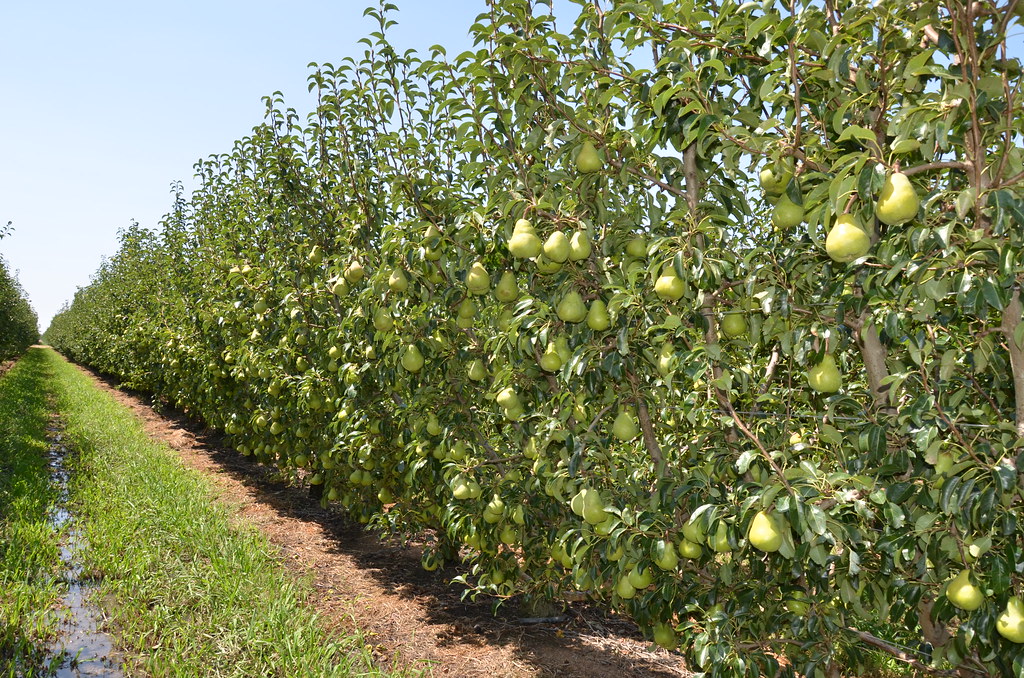11 Facts About Packham Pear

The Packham Pear is a delicious pear variety that originated in Australia. Its sweet, juicy flesh and smooth texture make it a favorite for snacking and cooking. Here are 11 fascinating facts about the Packham Pear variety.
Introduction
The Packham Pear was first cultivated in 1896 by an Australian orchardist named Charles Packham. He crossed the Williams Bon Chrétien pear with the Uvedale St. Germain pear to create this new variety. Over the years, Packham Pears have become hugely popular thanks to their rich, sweet flavor and creamy texture when ripe.
Beyond being tasty, Packham Pears offers some nutritional benefits as well. They are packed with vitamin C, copper, and fiber. Read on to learn more about this phenomenal fruit!
Facts About Packham Pear

- Origins: Packham Pears were created in Australia by Charles Packham in 1896. He crossed a Williams Bon Chrétien pear with a Uvedale St. Germain pear.
- Flavor: Packham pearls have a sweet, rich flavor when ripe, with subtle floral aromas. The flesh is smooth and creamy.
- Texture: Packham Pearls transform from crunchy when unripe to soft and creamy when ripe. The flesh is finely grained and smooth.
- Appearance: Packham Pearls are medium to large. The skin turns from green to pale yellow as it ripens, covered in patches of russeting.
- Season: Packham Pears have an exceptionally long season. They are available from March through October in Australia, making them a versatile fruit.
- Nutrition: Packham Pears are packed with vitamin C. One medium pear contains 12% of the daily recommended intake. They also provide copper and fiber.
- Uses: Packham Pears work well raw or cooked. Enjoy them fresh, baked, poached in wine, blended into smoothies, or layered into salads.
- Selection: Look for Packham Pears that feel slightly soft when ripe. Avoid those with bruises. Green skin means they are still unripe.
- Storage: Store ripe Packham Pears in the refrigerator for up to five days. Let firm, unripe pears ripen at room temperature first.
- Prep: Packham Pears are quite versatile. Slice or dice them raw for fruit salads or cheese boards. They also poach, bake, or grill nicely.
- Pairings: Packham Pears go well with cheeses like brie and blue cheese. Their sweetness balances salty meats like prosciutto or pork. They also complement nuts, wine, cinnamon, and vanilla.
Conclusion
The Packham Pear has become a beloved fruit variety, not just in Australia but worldwide. Their sweet flavor, creamy texture, and long season make them incredibly useful. Beyond being delicious, Packham Pears also offer the health bonus of vitamins, minerals, and fiber. With so many virtues, it’s no wonder Packham Pears have earned their stellar reputation.

FAQ
What is the taste of Packham pears?
Packham pears have a sweet and aromatic flavor. When ripe, they are juicy, creamy, and have a slightly soft texture.
When are Packham pears in season?
Packham pears are available in the spring through winter in the northern hemisphere and in the fall through spring in the southern hemisphere.
Are Packham pears nutritious?
Yes, Packham pears are a good source of vitamin C and dietary fiber, making them a healthy choice.
How can I use Packham pears in cooking?
Packham pears can be enjoyed both raw and cooked. They are delicious when eaten fresh or sliced into salads. They can also be baked, poached, or used in smoothies and desserts.
Where are Packham pears primarily grown?
Packham pears were originally developed in Molong, New South Wales, Australia. Today, they are mainly grown in the southern hemisphere, including Australia, Chile, Argentina, and South Africa. They can also be found in some home gardens and select farmer’s markets in the United States.





